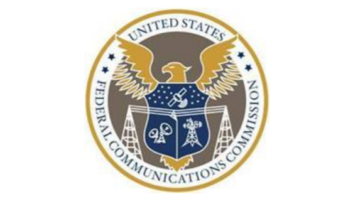
The Federal Communications Commission recently said it plans two changes to make broadcast regulatory fees more “rational.” The planned schedule for fiscal 2016 would increase annual regulatory fees for owners across many radio station classes next year, with the biggest increases passed on to a newly created subgroup serving the largest populations. Fees in a few other categories would go down.
The commission is asking for comments on the fees, which it hopes will bring in $384 million in FY2016 (Media Bureau fees are expected to make up $133.97 million of it). The total includes $339.8 million for regular expenses and a one-time amount of $44.1 million to offset facilities reduction costs, which covers the commission’s potential HQ relocation and downsizing of FCC office space.
As shown in the top chart at right, the commission plans to add a group to the AM and FM broadcasters table, a subgroup for stations in areas with more than 6 million people. Past charts (like FY2015, lower chart) topped out at 3 million-plus; but this year, there would be a category for those that serve between 3 million and 6 million and another category for those serving more than 6 million.
The commission also is trying to standardize the incremental increase in fees as the population served increases, and to more consistently assess fees based on type and class of service.

When it proposed all this earlier, it said, it received no public comments about it. “We conclude adopting these proposals will make the regulatory fees for AM and FM radio more rational and address, in part, the problem of a large number of stations in the highest grid,” the commission stated in a Notice of Proposed Rulemaking in May.
What this means in practice is that while a Class B FM station in the largest category paid $12,025 in fiscal 2015, its fee this year would be either $13,750 (a 14% increase) or $17,175 (a 43% increase) depending on its population served number. All percents are by Radio World calculations.
Aside from the addition of a new top tier, many rates would increase. For example, an FM Class A serving an area of 600,000 people would see an 18% hike. On the other end of the table, those paying the smallest fee are Class C AMs serving populations of 25,000 and less. Their proposed fees are $690 compared to $590 in FY2015, a 17% increase.
However, according to the charts provided by the FCC, fees would instead go down in nine of the 42 boxes of the lower chart; eight of those nine are AM categories.
Comments on the regulatory fee schedule including the category change can be submitted using Proceeding Number 16-166. The comment deadline is June 20, with a reply comment deadline of July 5.
The commission is required to assess fees each year in an amount that can reasonably be expected to equal the amount of its appropriation. In fiscal 2015 it collected $7.67 million above the required fee target goal; the difference goes into government coffers. It also said its cumulative “over collection” to date is more than $98 million but it didn’t state a time frame.












